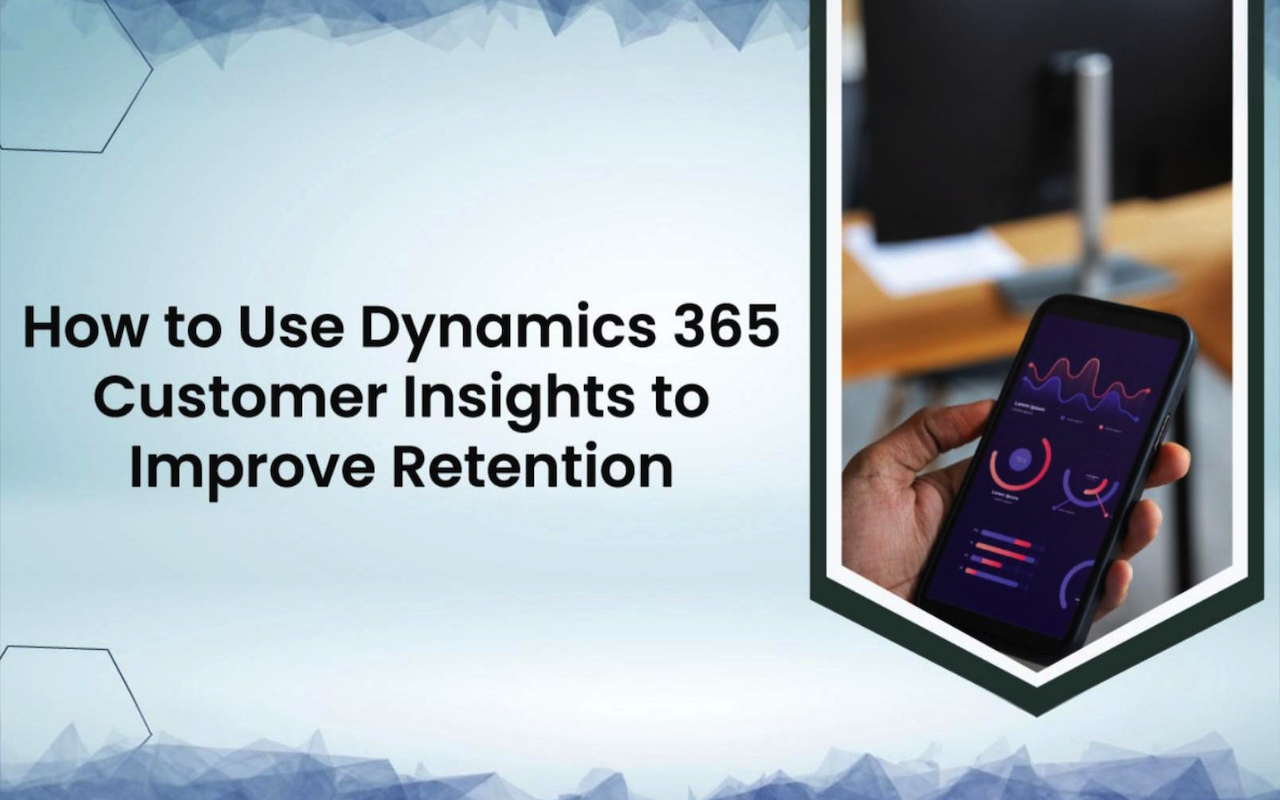
Keeping customers happy is one of the biggest challenges for any business. While attracting new customers is important, retaining existing ones is significantly more valuable. Research consistently shows that retaining customers costs far less than acquiring new ones and even a small 5% increase in retention can result in profit growth of up to 95%.
Despite this, many organizations continue prioritizing acquisition over retention. Studies show that 88% of customers abandon a purchase due to a poor experience, highlighting the importance of understanding customer needs and delivering consistent value.
Microsoft Dynamics 365 Customer Insights helps organizations consolidate customer data, uncover behavioral patterns, and use analytics to strengthen brand loyalty. This article explores how customer insights can support customer retention and how businesses can practically apply its key capabilities.
Understanding Customer Retention
What is Customer Retention?
Customer retention refers to a business’s ability to keep its existing customers over time. It is a core outcome of strong customer relationships, consistent value delivery, and effective CRM strategies. Retained customers tend to spend more, remain longer, and contribute to a much higher ROI.
Key metrics that help evaluate retention performance include:
- Churn rate
- Customer lifetime value (CLV)
- Repeat purchase rate
- Purchase frequency
Why Businesses Struggle with Retention
- High competition: Customers can switch brands easily if they find better value or experience elsewhere.
- Poor customer service: Slow responses or unresolved issues quickly erode trust.
- Lack of personalization: Generic communication fails to resonate with modern customers who expect tailored experiences.
- Infrequent communication: When customers feel ignored, they lose interest and look elsewhere.
Overview of Dynamics 365 Customer Insights
What is Dynamics 365 Customer Insights?
Dynamics 365 Customer Insights is Microsoft’s customer data platform (CDP) designed to unify data from multiple sources and deliver actionable analytics. As part of a broader Dynamics 365 implementation, it gathers information from interactions such as purchases, campaign responses, support history, website activity, and loyalty behavior to build a comprehensive view of each customer.
This consolidated profile gives organizations real-time visibility into preferences, trends, and potential risks.
Key Features That Support Retention
- Customer profiles and segmentation: Helps create a unified customer view for targeted engagement and tailored experiences.
- Predictive analytics: Uses AI-powered models to assess churn risk, identify upsell opportunities, and reveal behavioral trends.
- AI-driven recommendations: Supports personalized offers, next-best-action suggestions, and intelligent prioritization.
- Integration with marketing & sales platforms: Ensures consistent data across teams and enables seamless automation and event-triggered engagement.
How to Use Dynamics 365 Customer Insights to Improve Retention
Step 1: Unify Customer Data Across Channels
A retention strategy works best when all teams share the same customer information. Dynamics 365 centralizes data from multiple touchpoints, providing role-based views so teams can access the insights most relevant to their responsibilities.
Unified profiles enable:
- Personalization
- More accurate targeting
- Better timing of outreach
- Improved customer experience
Step 2: Segment Customers Intelligently
Meaningful segmentation allows businesses to tailor communication and retention strategies to specific groups—loyal customers, at-risk customers, high-value customers, or new users.
Dynamics 365 helps prevent information overload by organizing data into structured, role-based segments that support clarity and efficiency.
Step 3: Predict Customer Behavior
Dynamics 365 Customer Insights uses AI and machine learning to forecast:
- Churn probability
- Purchase likelihood
- Product interest
- Upsell and cross-sell opportunities
Predictive modeling helps businesses intervene early, deliver timely support, and engage customers before dissatisfaction escalates.
Step 4: Personalize Customer Engagement
Using enriched customer profiles, organizations can tailor interactions across:
- SMS
- Social media
- Support channels
- Loyalty programs
Personalization strengthens emotional connection, improves satisfaction, and increases the likelihood of repeat purchases.
Step 5: Automate and Optimize Retention Campaigns
Automation ensures consistency and timeliness. Dynamics 365 enables organizations to trigger workflows such as:
- Renewal reminders
- Personalized product recommendations
- Rewards notifications
- Follow-up sequences
When teams share a unified platform, customers receive consistent and accurate communication, which reinforces trust.
Real-World Use Cases / Examples
Example 1: Retail
Retailers can use Dynamics 365 to:
- Recommend personalized products
- Launch targeted promotions
- Analyze buying behavior
- Increase repeat store visits or online conversions
Unified customer profiles help deliver tailored experiences that boost loyalty.
Example 2: Financial Services
Financial institutions can use customer insights to:
- Create 360-degree customer profiles
- Identify churn risks
- Recommend personalized financial products
- Improve customer satisfaction through timely outreach
Predictive data supports more informed decision-making.
Example 3: B2B SaaS
B2B SaaS organizations benefit through:
- Understanding product usage patterns
- Identifying clients at churn risk
- Personalizing onboarding sequences
- Improving customer satisfaction through targeted engagement
Dynamics 365’s integration across tools improves collaboration and visibility across teams.
Measuring the Impact on Retention
Key Metrics to Track
- Churn rate: Measures how many customers stop using a product.
- Retention rate: Shows how many customers remain over time.
- Repeat purchase rate: Indicates loyalty and purchase frequency.
- NPS/CSAT: Evaluates satisfaction and likelihood to recommend.
Using Insights Dashboards
Dynamics 365 dashboards visualize patterns and KPIs using:
- Charts
- Tables
- Trend lines
- Customer segments
These insights help teams regularly track progress and adjust retention strategies as needed.
Conclusion
Improving customer retention is essential for sustainable business growth. Dynamics 365 Customer Insights provides a powerful way to unify data, understand behavior, personalize engagement, and automate customer interactions. By applying these capabilities, businesses can strengthen loyalty, reduce churn, and deliver more meaningful experiences at every stage of the customer journey.
Share this post
Leave a comment
All comments are moderated. Spammy and bot submitted comments are deleted. Please submit the comments that are helpful to others, and we'll approve your comments. A comment that includes outbound link will only be approved if the content is relevant to the topic, and has some value to our readers.

Comments (0)
No comment